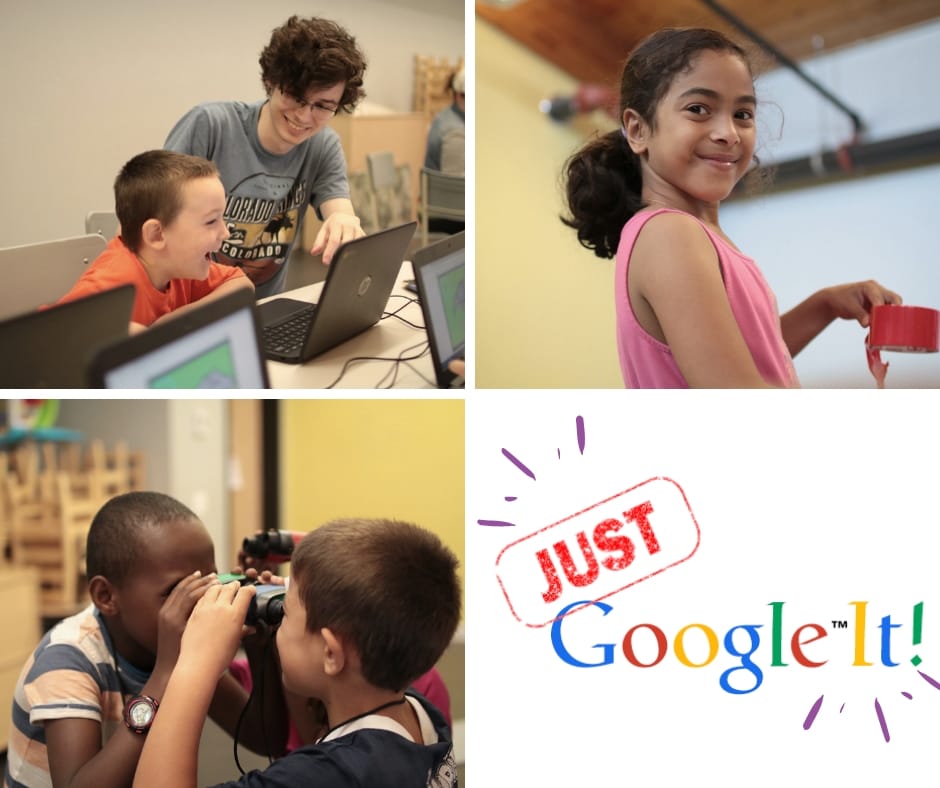Just Google It!

Does Googling It Impact Inquiry in the Classroom?
I stumbled across an article by Terry Heick with Teach Thought (www.teachthought.com @teachthought) earlier this week on Twitter with a post they shared about how so many of us rely on Google for the answers to all of the questions we have:
I can’t remember who starred in that movie or what the formula for Ohm’s Law is? Just Google It. We all have been there. In fact, I wouldn’t be surprised if I do this at least once a day!
This is a perfect indicator of the amazing technological world we live in. The smartphone revolution has brought a world of knowledge to our fingertips and we are, for the most part, better off for it. This also translates into the classroom where we are constantly encouraging our students to use 21st century skills to better prepare them for the workforce. A huge part of this is modeling and encouraging the proper use of tools which allow us to seek the answers to the questions we have. Something I have not considered before reading this article though is that, in just using Google to seek answers, students “often may find what they want rather than what they need”. In other words, by rushing to and settling on an answer that Google provides, you are bypassing the process of inquiry-based learning and critical thinking. Heick raises concern that this process might not allow for an understanding of the knowledge which, in turn, affects comprehension and retention of the concepts. In essence, without allowing the opportunity to carry out the process of inquiry we may be going against the idea that students should be thinking critically about the questions they ask as well as the information they find.

As a “maker educator”, I can see the importance of having a world of information at our fingertips. I see Google Home and Amazon Echo devices effectively being embedded in classrooms and makerspaces more and more. In these situations, I see them being used as tools that promote independent learning in students, where they can easily search for information immediately and efficiently. In such classrooms, I can see students who might be trying to convert centimeters to inches shouting out “Hey Google!” followed by their question and, in no time, have the answer they need to continue with their project. Heick reminds us though to be aware that these searches mostly yield “information” and not “knowledge”. In other words, these searches do not lend themselves to an understanding of the whys and hows of that particular subject matter.
Heick points out that the main difference between searches and inquiry is the scale and speed at which we acquire information. Google searches usually yield a lot of results at an impressive rate, as opposed to the broader scope and slower pace that inquiry involves. In the end, my biggest take home from this rabbit hole of insight is that searching does have it’s place in the classroom but it is important for us to instill in our students that their search for answers shouldn’t end there. We need to encourage them to think critically about the information they acquire and to seek connections in order to to build on their true knowledge of the content.
Here is a link to the article by Teach Thought. I encourage you to read it and please offer up your take on this perspective. If anything, this article has made ME think critically about a very useful tool that we, and our students, constantly rely on.
https://www.teachthought.com/critical-thinking/right-information-right-time/


#inquirybasedlearning #criticalthinking #Heickraisesconcernthatthisprocessmightnota #makereducator #searchesmostlyyieldinformationandnotknow #instillinourstudentsthattheirsearchforansw